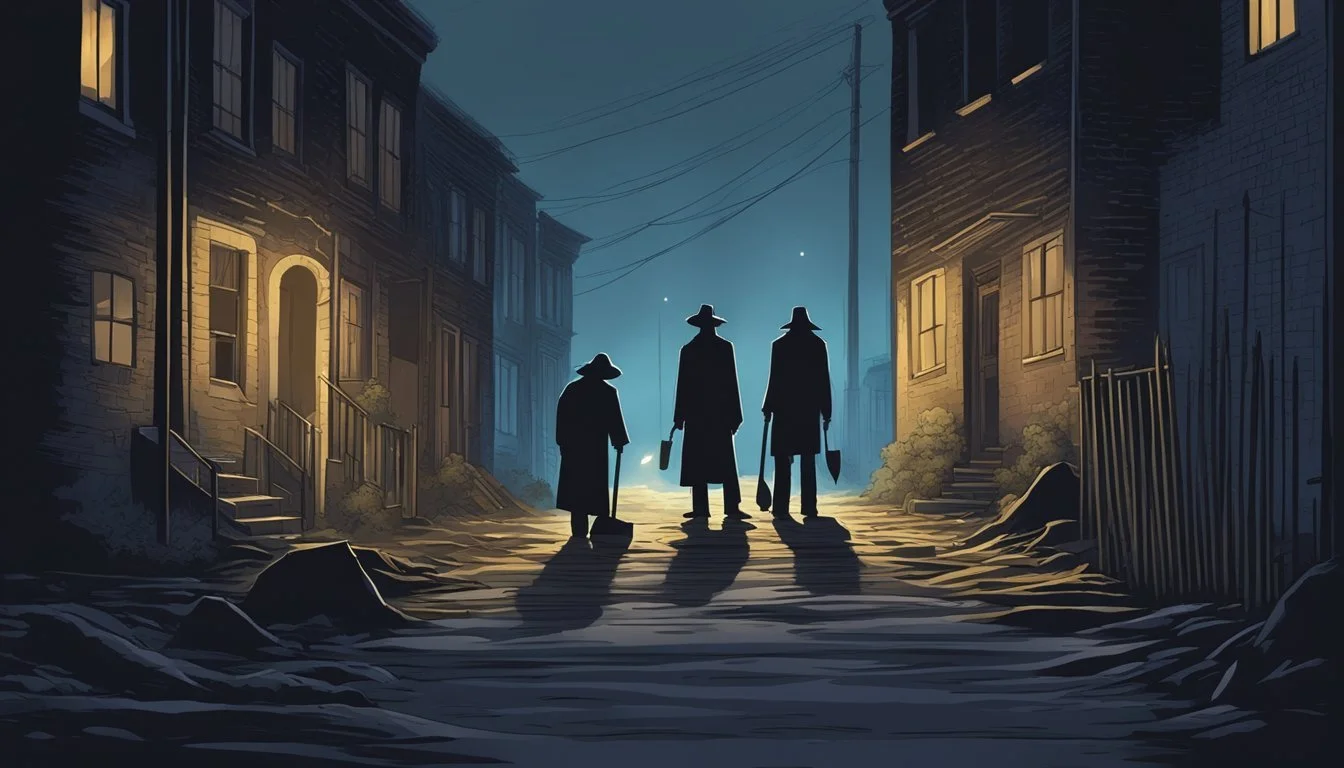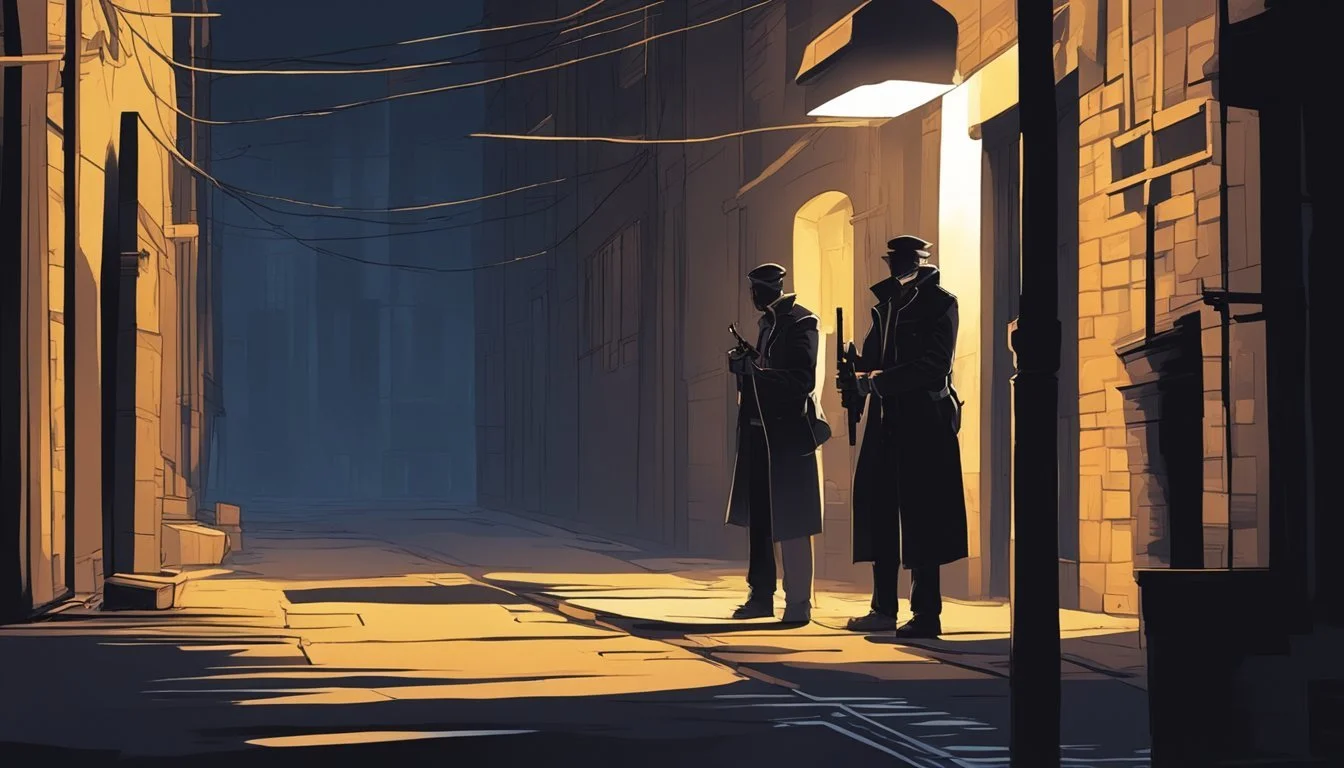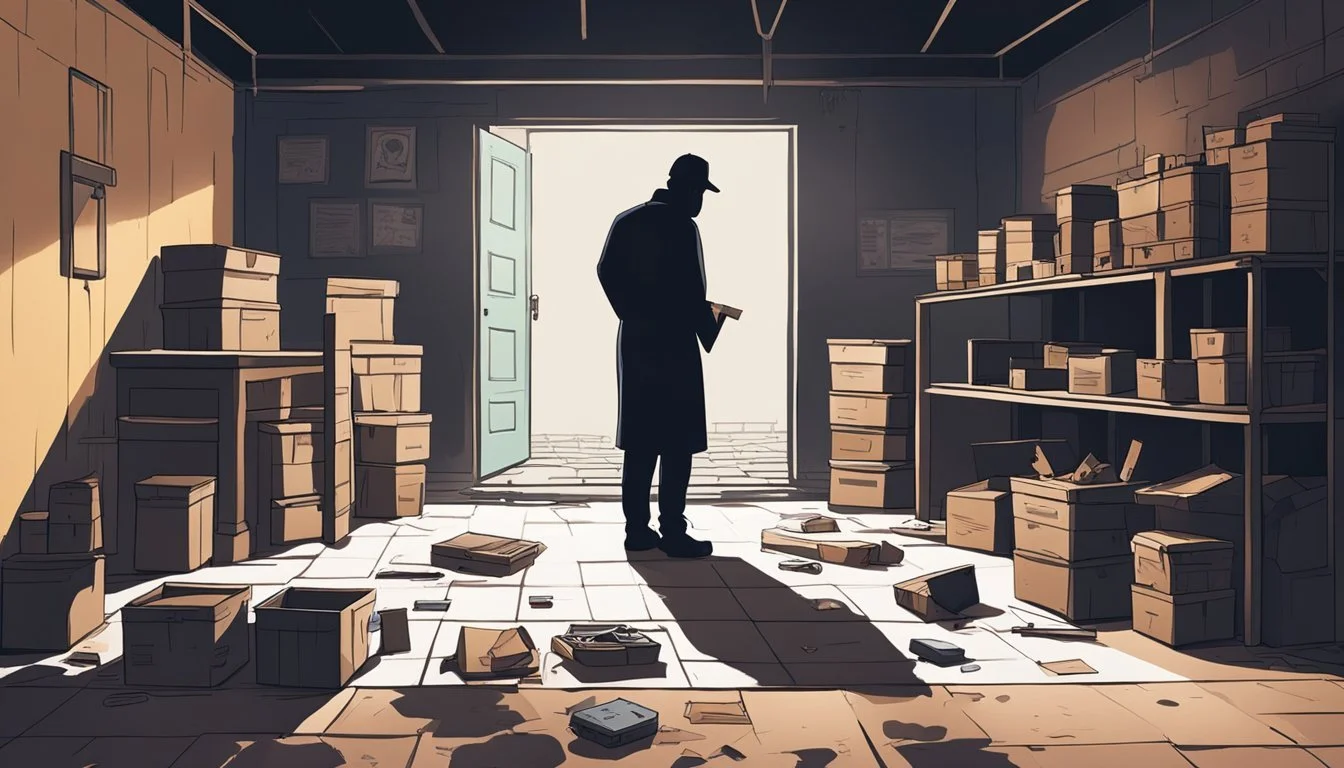Dean Corll's Bitter End: Candy Man Killer Murdered by Accomplice
Teen Ends Reign of Terror
Dean Corll, known as the Candy Man Killer, terrorized Houston, Texas in the early 1970s. His reign of horror ended abruptly on August 8, 1973, when one of his teenage accomplices, Elmer Wayne Henley, shot and killed him. This shocking turn of events brought an end to Corll's brutal spree of abductions, rapes, and murders targeting young boys and men.
Corll's crimes came to light after his death, revealing the true extent of his depravity. With the help of two teenage accomplices, David Owen Brooks and Elmer Wayne Henley, Corll had abducted and murdered at least 28 victims over a three-year period. The case became known as the Houston Mass Murders, sending shockwaves through the community.
The Candy Man Killer's demise at the hands of his own accomplice marked a dramatic conclusion to one of America's most disturbing serial killer cases. Henley's decision to turn against Corll not only saved his own life but also led to the discovery of numerous victims' remains, bringing some closure to grieving families.
The Identity of the Candy Man Killer
Dean Corll, known as the Candy Man, was a serial killer who operated in Houston, Texas in the early 1970s. His nickname stemmed from his connection to the candy business and his method of luring victims.
Early Life and Background of Dean Corll
Dean Arnold Corll was born on December 24, 1939, in Fort Wayne, Indiana. He moved to Houston with his family as a child. Corll's parents divorced when he was young, and he lived with his mother.
In Houston, Corll helped run his family's candy business. He worked at the Corll Candy Company, which his mother and stepfather owned. This job put him in regular contact with local youth.
Corll served in the U.S. Army from 1964 to 1965. After his discharge, he returned to Houston and continued working in the candy business.
Origin of 'Candy Man' Moniker
The nickname "Candy Man" originated from Corll's involvement in the candy industry. He often gave free candy to children and teenagers in his neighborhood.
Corll used his position at the candy company to approach young boys. He lured victims with promises of parties, drugs, or alcohol. The candy connection became a sinister aspect of his crimes.
The media latched onto the "Candy Man" moniker after Corll's crimes were uncovered. It highlighted the contrast between his public image and his horrific actions.
The Horrors Unveiled
Dean Corll's crimes shocked Houston and the nation. His brutal acts against young boys left a dark stain on the city's history and revealed the depths of human depravity.
Overview of Crimes Committed
Between 1970 and 1973, Dean Corll abducted, tortured, and murdered at least 28 teenage boys in Houston, Texas. He lured victims using alcohol and drugs, often with help from teenage accomplices.
Corll's methods were sadistic. He restrained victims on a plywood torture board, sexually assaulting them for hours or days. Most were strangled or shot.
Bodies were buried at various sites, including a boat shed and beach. Corll kept victims' personal items as trophies. He used plastic sheeting to contain evidence during his crimes.
Investigation and Discovery
The full extent of Corll's murders came to light in August 1973. His accomplice Elmer Wayne Henley shot and killed Corll, then confessed to police.
Investigators uncovered a horrific scene at Corll's home. They found torture implements, a plywood board, and restraints. Body excavations soon began at multiple locations.
The investigation revealed Corll's meticulous planning. He targeted vulnerable youth, often from broken homes. Many victims remained unidentified for years.
Police faced criticism for their handling of missing persons reports. The case exposed flaws in how disappearances of troubled teens were investigated.
Accomplices in the Shadows
Dean Corll did not act alone in his heinous crimes. Two teenage accomplices played crucial roles in luring victims and assisting with the murders that terrorized Houston in the early 1970s.
Elmer Wayne Henley and David Owen Brooks
Elmer Wayne Henley and David Owen Brooks were teenagers when they became entangled in Corll's web of violence. Henley was 14 when he met Corll in 1971. Brooks had known Corll since 1967 at age 12. Both came from troubled homes and fell under Corll's influence.
Corll manipulated the boys with money, drugs, and attention. He exploited their vulnerabilities and gradually pulled them into his murderous activities. Henley and Brooks helped procure victims, often luring other teens with promises of alcohol and parties.
Roles and Participation
Brooks primarily acted as a procurer, bringing victims to Corll. He received $200 for each boy he delivered. Henley started similarly but became more directly involved in the killings over time.
The accomplices:
Helped abduct victims
Participated in torture and murder
Assisted with body disposal
Henley eventually turned on Corll, killing him in 1973. He claimed self-defense, stating Corll had threatened to kill him. This event led to the unraveling of the entire murder operation.
Both Henley and Brooks were convicted for their roles in the murders. They received multiple life sentences. Brooks died in prison in 2020, while Henley remains incarcerated as of 2024.
The Takedown of a Killer
Dean Corll's reign of terror came to an abrupt end on August 8, 1973. His downfall was orchestrated by one of his own accomplices in a shocking turn of events.
Murdered by Accomplice
Elmer Wayne Henley, Corll's 17-year-old accomplice, shot and killed the notorious serial killer. The incident occurred at Corll's home in Pasadena, Texas. Henley used a .22 caliber pistol to fire multiple shots at Corll.
The young accomplice claimed he acted in self-defense. Henley stated that Corll had threatened to kill him and other teenagers present at the house that night.
After the shooting, Henley called the Pasadena Police Department to report the incident. This call set in motion the discovery of Corll's heinous crimes.
The Aftermath and Implications
The death of Dean Corll led to the unraveling of one of the most horrific serial killing sprees in American history. Police investigations revealed the extent of Corll's crimes, shocking the Houston community and the entire nation.
Authorities uncovered the remains of numerous victims buried at various locations. The total number of confirmed victims reached at least 28 young boys and men.
Henley and another accomplice, David Brooks, were arrested and charged for their roles in the murders. Their testimonies provided crucial details about Corll's methods and the scope of his crimes.
The case highlighted the vulnerability of young people to predators and raised questions about law enforcement's handling of missing persons reports.
The Victims and Their Stories
Dean Corll's reign of terror claimed the lives of at least 28 young boys and men in Houston. The victims' families endured years of anguish as they searched for answers about their missing loved ones.
Identifying the Lost
Corll targeted boys and young men primarily from Houston's Heights neighborhood. Many victims came from troubled backgrounds or were runaways, making them vulnerable targets. James Stanton Dreymala, age 13, was Corll's final known victim. His remains were found buried at Lake Sam Rayburn.
The Harris County Institute of Forensic Sciences worked to identify recovered remains through dental records and DNA analysis. Facial reconstruction techniques were used on unidentified victims in hopes of generating leads. Texas EquuSearch assisted in locating burial sites at High Island beach.
Families in Search of Closure
For years, families of missing boys lived in limbo, not knowing the fate of their loved ones. Some parents continued searching decades after their sons disappeared. The discovery of the murders brought a mix of grief and relief as families finally learned what happened.
Rhonda Williams, who survived an encounter with Corll, provided crucial information to investigators. Her testimony helped piece together details about the victims and Corll's methods.
Many families struggled to process the horrific nature of the crimes. Support groups formed to help parents and siblings cope with their loss and trauma. Some families pushed for changes in missing persons investigations to prevent similar tragedies.
Legal Proceedings and Sentences
The trials of Dean Corll's accomplices resulted in lengthy prison sentences. Both Elmer Wayne Henley and David Brooks faced justice for their roles in the Houston Mass Murders.
Trials and Convictions
Elmer Wayne Henley stood trial first in July 1974. The jury found him guilty of six murders, sentencing him to six consecutive 99-year terms. David Brooks faced trial in March 1975. He received a life sentence for his involvement in one murder.
Prosecutors presented evidence of the duo's participation in Corll's crimes. This included victim testimonies, physical evidence, and the accomplices' own statements. The trials shocked the public with gruesome details of the murders.
Life Sentences and Beyond
Henley and Brooks began serving their sentences in the Texas Department of Criminal Justice system. Henley remains incarcerated at the Mark W. Michael Unit in Anderson County. Brooks served his time at the Polunsky Unit in Livingston until his death in May 2020.
Both men have been denied parole multiple times. Henley's earliest possible release date is October 2025. However, given the nature of his crimes, release remains unlikely. The cases continue to draw attention decades later, serving as a stark reminder of the Houston Mass Murders.
Psychological Impacts and Social Reception
Dean Corll's crimes left deep psychological scars on victims' families and the Houston community. His case revealed disturbing insights into the mind of a serial killer and sparked widespread fear and cultural shifts.
Insights into Corll's Psychology
Corll exhibited classic traits of antisocial personality disorder and sexual sadism. His troubled childhood, including his parents' divorce and reunion, likely contributed to his psychological issues. Corll's nickname "Candy Man" stemmed from his family's candy business, which he used to lure victims.
Experts believe Corll's spina bifida may have fueled feelings of inadequacy, driving his violent compulsions. His sexual relationships with male accomplices pointed to repressed homosexuality. Corll kept victims' keys as souvenirs, demonstrating trophy-taking behavior common in serial killers.
Community and Cultural Responses
The Houston community reacted with shock and horror upon learning of Corll's crimes. Parents became hyper-vigilant about their children's safety. Media coverage was intense, with the case dominating local headlines for months.
Corll's murders highlighted vulnerabilities in how missing persons cases were handled. Police faced criticism for initially dismissing reports of missing boys. The case spurred improvements in law enforcement procedures and increased awareness of child predators.
The cultural impact extended beyond Houston. Corll's crimes contributed to growing fears about "stranger danger" across America. His case became a cautionary tale, forever changing how many viewed the safety of their communities.
Media and Cultural Depictions
Dean Corll's horrific crimes have been the subject of numerous true crime productions and cultural references. His brutal murders and the shocking details of his case continue to fascinate and disturb audiences decades later.
Documentaries and True Crime Representations
Several documentaries have explored Dean Corll's crimes. "The Candy Man Killer" offers a revealing look into Corll's dark history and the investigation that led to his downfall. Another documentary delves into the chilling story of the "Candy Man" and his impact on Houston's Heights neighborhood.
True crime series like "Mindhunter" have referenced Corll's case. These productions often focus on the psychological aspects of Corll's crimes and his manipulation of young accomplices.
Many documentaries highlight Corll's use of his family's candy store to lure victims, earning him the "Candy Man" moniker.
Influence on Popular Culture
The nickname "Candy Man" has become part of true crime lexicon, inspiring fictional characters and storylines. Horror films and novels have drawn inspiration from Corll's crimes, using elements of his modus operandi in their narratives.
Corll's case has been featured in true crime books and podcasts. These works often examine the societal factors that allowed his crimes to go undetected for years.
The term "Candy Man" has taken on a sinister connotation in popular culture, far removed from its innocent origins. Corll's crimes have become a cautionary tale, influencing parental attitudes and community vigilance.
Legacy and Ongoing Investigations
Dean Corll's crimes continue to impact investigations and forensic research decades after his death. Efforts persist to identify all victims and advance scientific techniques for analyzing cold cases.
Continued Search for Victims
Authorities have not ceased their efforts to identify Corll's remaining unknown victims. In 2021, the National Center for Missing & Exploited Children released new facial reconstructions of the last unidentified victim, known as John Doe 1973. This victim was found wearing swimming trunks with a peace symbol.
Law enforcement agencies regularly review missing persons cases from the early 1970s, seeking potential matches. DNA testing has been conducted on preserved evidence, including items found in Corll's Chevrolet Corvette.
Investigators continue to follow up on leads related to possible additional victims. Timothy Cordell Kerley and Bobby French remain persons of interest in the case.
Advances in Forensic Research
Corll's case has spurred advancements in forensic anthropology and cold case investigation techniques. Researchers study preserved evidence to develop new methods for analyzing decades-old crime scenes.
DNA extraction from degraded samples has improved, allowing for potential matches with genetic databases. Isotope analysis of bone and tooth samples helps narrow down geographical origins of unidentified remains.
3D imaging and facial reconstruction technology have enhanced efforts to visualize and identify victims. These techniques may prove crucial in solving the remaining mysteries of Corll's blood lust.
Forensic psychologists continue to study Corll's case to better understand serial killer behavior and improve profiling methods for future investigations.









